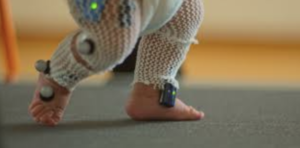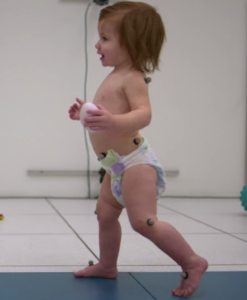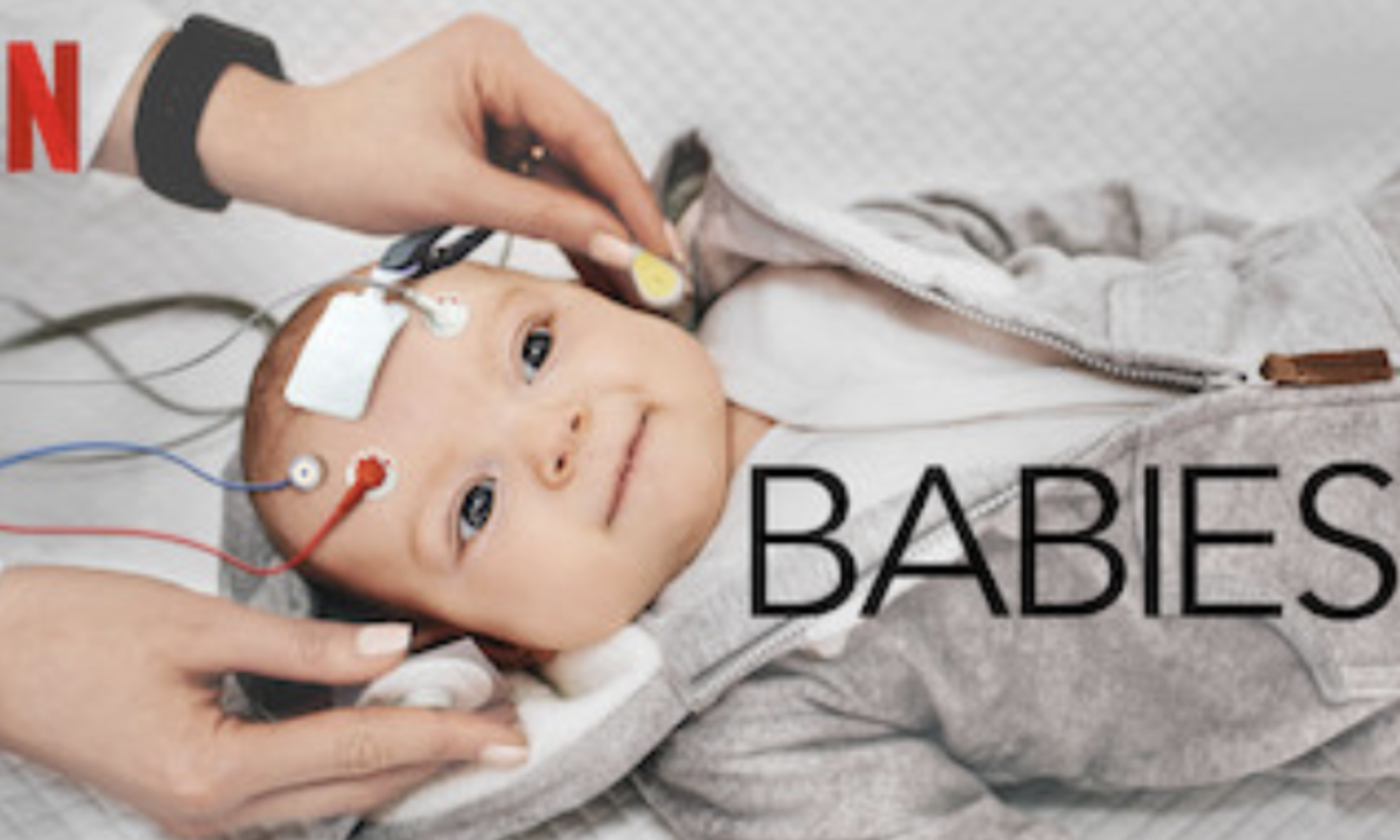
Summary:
The final episode of the series, titled “First Steps,” covers the complex time period in which babies are first able to walk on their own. The first family shown has a set of eleven-month-old twins of which one twin is close to walking, while the other is more comfortable to continue jumping and crawling around. In Amsterdam, Dr. Nadia Dominici, associate professor at the Department of Human Movement Sciences at Vrije Universiteit, demonstrates how babies have a reflex to start walking at a young age if you hold them up and support most of their weight. Her research is trying to determine whether this reflex, or “newborn stepping,” is the foundation for future walking, or if it disappears and independent walking is a new phenomenon. Muscular activity was compared between newborn stepping and independent walking by measuring the electrical activity of muscles as well as mapping by movement sensors. The babies ‘walked’ while held on a treadmill and the toddlers walked independently in front of a camera. The toddlers keep the same movement patterns as the newborns, indicating that they keep the original building blocks for walking and that babies are born with innate walking skills. Dr. Dominici recommends for parents to try and develop the physical skills that babies need to walk by encouraging them to move even before they start walking.
Dr. Libby Cowgill, an associate professor of Biological Anthropology at the University of Missouri, studies how exercise is reflected in physical remains and “how the young human skeleton responds to the challenges of standing upright and taking its first steps.” She looked at bone cross-sections of over 600 infant remains that were between tens and thousands of years old. She saw that the cross sections of young children’s leg bones were not teardrop-shaped like adults, but more like an oval, indicating their bones respond to exercise. Along with Dr. Cara Ocobock, an assistant professor of Anthropology at the University of Notre Dame, Dr. Cowgill measured force plate data, or ground reaction force, of babies walking. Babies move side to side while walking and due to that, their bodies lay down more bone on the sides of the bone to resist the forces, resulting in the different bone shapes than adults.
In Merced, California, Dr. Eric Walle, professor of Developmental Psychology at UC Merced, studies how walking and ‘traveling’ changes a baby’s world. In his experiment, babies were allowed to play in a room with toys that had been associated with different emotions while their parents filled out a language survey. Dr. Walle discovered that walking babies had a much larger vocabulary of words they understood and could say. They recorded all of the words that the babies heard in a day as well as all the words that the babies babbled. The researchers found that walking and crawling babies heard roughly the same number of words per day and seemed to make the same number of vocalizations during the day. Dr. Walle then focused his attention on the quality of the language and found differences between how parents respond to crawling and walking infants, which helped walking infants have a higher rate of word learning. When children start walking, it matters even more what the parents say to them. The episode ends with a montage of all the babies featured in the series walking, including the twin who was slower to start than his sister.

Review:
In the final episode, Dr. Dominici researches whether babies are born with an innate ability to walk or if newborn stepping is a fluke and then forgotten on the way to independent walking. Having such an innate ability to walk from a young age would indicate that walking is a trait passed down through our genes from our ancestors who transitioned to bipedalism. To support Dr. Dominici’s theory that newborn stepping and independent walking are related, a chapter titled “The Road to Walking” by Karen Adolph and Scott Robinson tells us that babies seem to lose their newborn stepping ability as “infants’ legs increase in mass faster than they increase in strength” (Adolph and Robinson 4). The babies are therefore unable to continue stepping as their legs are too heavy. Eventually, their strength catches up with their mass and they are able to transition to independent walking, indicating that they would continue stepping if their legs did not become so heavy after the first few months.
